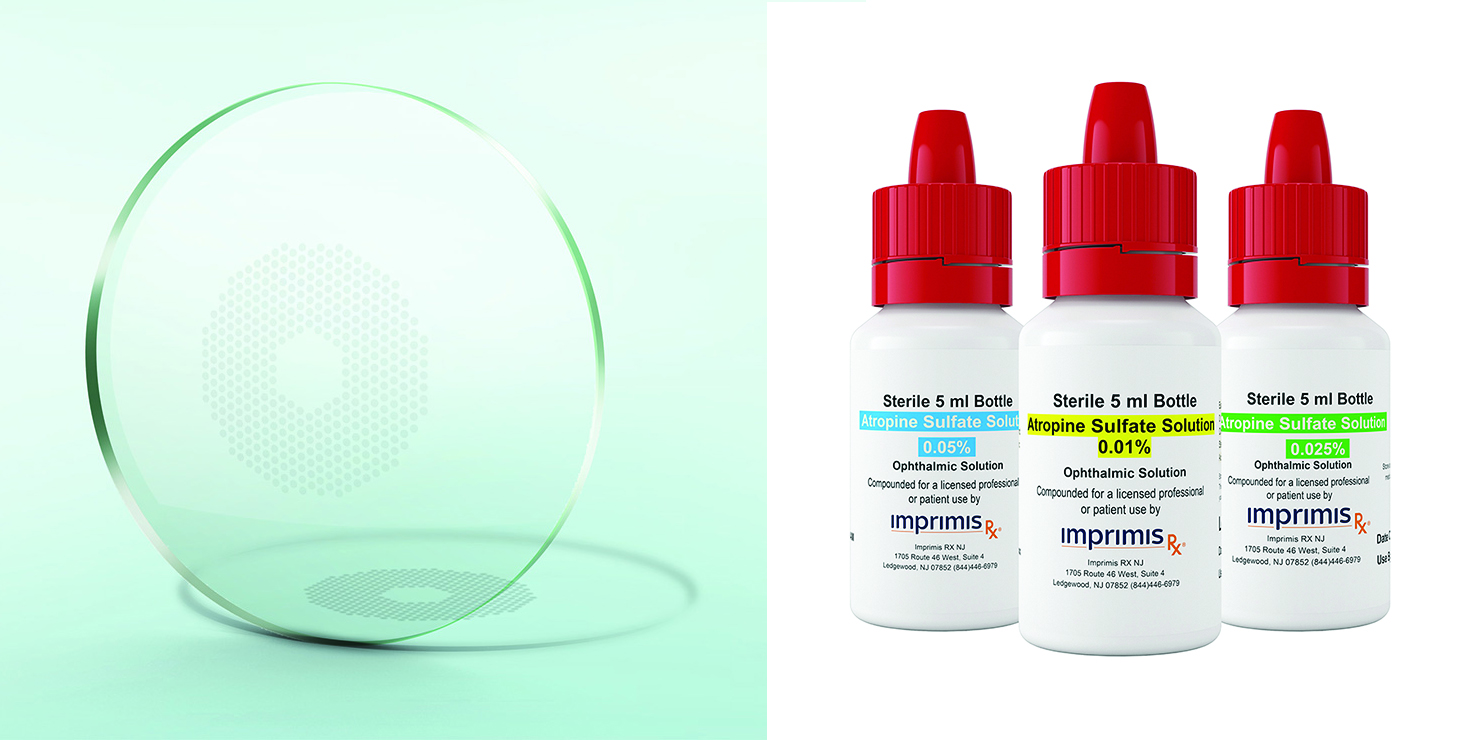 |
|
DIMS and 0.01% atropine appear to offer efficacious interventions for slowing myopic axial elongation in a new study. Photo: Hoya, Imprimis. Click image to enlarge. |
Defocus-incorporated multiple segment (DIMS) spectacle lenses are designed to slow myopia progression in children, based on the principle of peripheral myopic defocus and simultaneous vision. It is believed that different mechanisms underlie the benefit from atropine (non-accommodative, possibly via acting directly on receptors in the sclera) and optical approaches such as DIMS (reducing relative hyperopic defocus). Therefore, a research team composed of members from Italy and the United Kingdom hypothesized that their combined use may create an additive effect, which to-date has not been explored in a research setting. Their study demonstrated that both are effective at reducing myopia progression and axial elongation in progressive myopia and are most successful at reducing progression when used in combination.
The study was a non-randomized, experimenter-masked, prospective, controlled observational study of individuals six to 18 years old with progressing myopia but no ocular pathology (mean age: 10.3). Participants were allocated, according to patient/parent choice, to receive 0.01% atropine eye drops (n=53), DIMS (Hoya MiyoSmart) spectacles (n=30), combined atropine+DIMS (n=31) or single-vision spectacle lenses (control group; n=32). The key outcome variables, cycloplegic autorefraction spherical equivalent refraction (SER) and axial length (AL), were measured at baseline and after three, six and 12 months.
Generalized linear mixed model analysis revealed for SER, when controlling for age and SER at baseline at each stage, that all treatment groups had significantly reduced progression compared with the control group. For AL, when controlling for baseline age and AL at six and 12 months, all treatment groups had significantly less progression than the control group. For SER only, in pairwise comparisons at 12 months, the atropine+DIMS group had significantly reduced progression compared with the DIMS only and atropine only groups.
The proportion of participants who showed, from baseline to 12 months, no increase in AL was 10% in the DIMS group, 15% in the atropine group and 18% in the atropine+DIMS group, compared with only 2% of the control group.
A major limitation is that participants chose which intervention they received; there was no random allocation to groups. Although random allocation to groups is desirable to reduce the risk of bias, it has the disadvantage of making results less relevant to clinical practice.
“The study population represents individuals and families who are motivated to pursue myopia control and were attending a clinic that built a strong rapport with patients, which no doubt contributed to the high compliance rate,” the authors wrote in their paper. “It is not known whether the findings will apply to less motivated populations.”
Similarly, the team highlights that it is not known whether their novel findings concerning combined atropine+DIMS apply to populations with other racial origins.
Ucci P, Lembo A, Schiavetti I, et al. A comparison of myopia control in European children and adolescents with defocus incorporated multiple segments (DIMS) spectacles, atropine, and combined DIMS/atropine. PLoS One. February 16, 2023. [Epub ahead of print]. |


